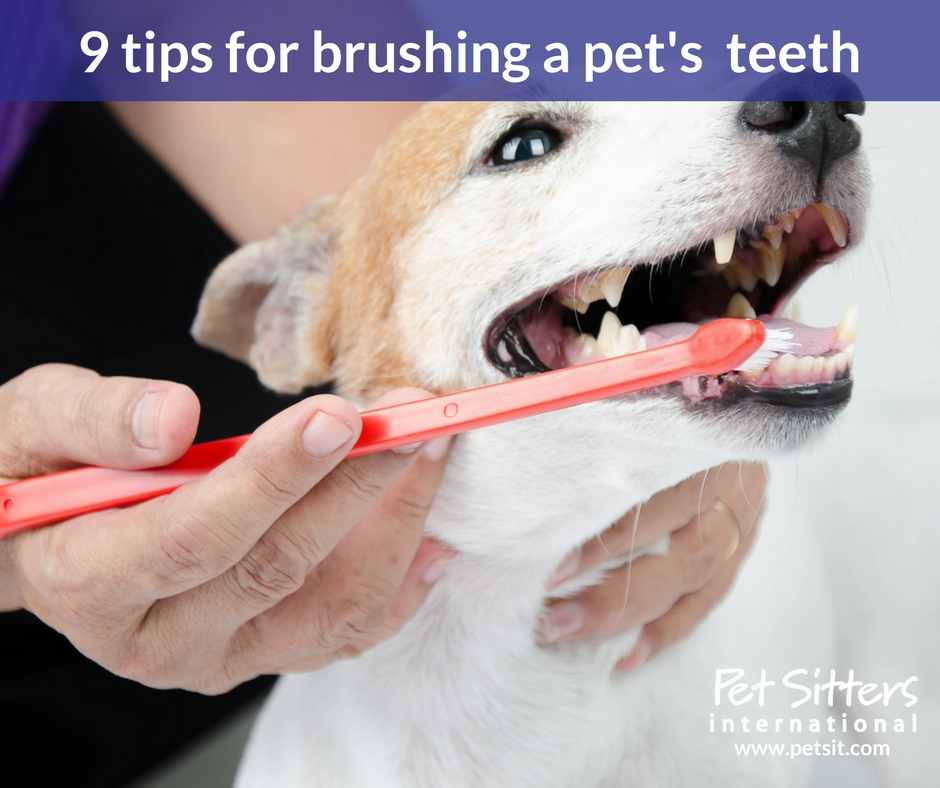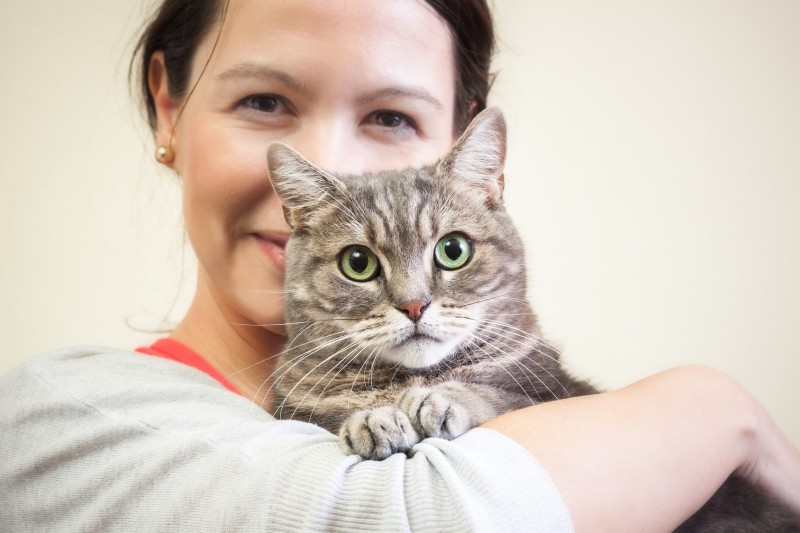9 tips for brushing a pet's teeth

Each February the American Veterinary Medical Association (AVMA®) sponsors National Pet Dental Health Month, but oral health care for pets should be a year-round concern.
According to the AVMA, dogs’ and cats’ teeth should be checked at least once a year by a veterinarian, but they should be checked sooner if any signs of dental problems are present, including:
- bad breath
- broken or loose teeth
- extra teeth or retained baby teeth
- bleeding gums
- abnormal drooling
- lack of appetite
- brown or discolored teeth
Did you know that periodontal disease is the most common dental condition in cats and dogs, and by the age of three, most pets will already have early evidence of periodontal disease? (Source: AVMA)
The good news is that prevention can start at home. Regularly brushing a pet’s teeth is the most effective way to keep their teeth healthy between dental visits and may eliminate the need for dental cleanings at the veterinarian’s office.
As a professional pet sitter, you are likely your clients’ go-to resource for pet-care tips and advice. While it’s important that you refer clients to veterinarians for any specific veterinary advice, you may want to recommend the following tips to help your clients with brushing their pets’ teeth—and you can use these tips on your own pets as well!
9 tips to make brushing your dog’s teeth a breeze:
- Use a specially designed pet toothbrush, not a human toothbrush. Even the softest human brush is too coarse for a canine toothbrush. When first getting used to a tooth-brushing routine, many people—and dogs—prefer the rubber type that fits over your finger. After everyone is accustomed to brushing, you can “upgrade” to a handled brush that does a better job of plaque removal.
- Use only veterinarian-approved pet toothpaste, as human toothpaste is not designed to be swallowed and can upset a dog’s stomach. In addition, there is a good selection of brands of pet toothpastes that come in flavors that dogs like, making it easier to coax them into a daily brushing session.
- Start by offering the dog a taste of the toothpaste to get it used to the smell and taste. With the various flavors available, you will probably find that different dogs have different favorites that will help them accept brushing more easily than other flavors. So if one flavor doesn’t seem to appeal to a dog, try another.
- If the dog is comfortable and at ease with this approach, it can help to sit the dog in a corner, with its back against a wall. Have a leash attached to its collar, then step on the leash with just a little slack. This will help to control the dog and keep it from “escaping” backwards while you are brushing its teeth.
- Put some toothpaste on the brush and lift the dog’s lip up from the side and brush the teeth you can reach from the side. At first you may want to brush only these teeth or just the canines (large “fangs” at the front of the mouth). As the dog gets used to brushing, you will be able to progress to opening the mouth wider and brushing the molars and the inside surfaces of the teeth as well as the outsides.
- However, you should be more concerned with the outside of the teeth and gum line, as a dog’s tongue does a fairly good job of keeping the inside area of the mouth cleaner.
- Keep the brushing sessions light and fun for the dog, with lots of attention, praise and affection for cooperative action.
- If you have to cut a dental session short because the dog is getting tired, upset or fidgety, that is okay, but try again the following day. Soon the dog should look forward to its daily dental care and you will be able to perform a complete tooth and gum cleaning in one session.
- When you are done, let the dog go with a special release command that lets it know its daily dental care is over and it is free to leave. Always use the same command and don’t use this command to the dog for anything else.
 For cats, Doctors Foster and Smith® recommend using tuna water or chicken broth on your finger and allowing the cat to lick it off to get used to you putting things in her mouth. From there, you can advance to placing gauze (again dipped in tuna water or something similar) on your finger and then gently rubbing her teeth in a circular motion. Once your cat is comfortable with this, you can advance to a toothbrush.
For cats, Doctors Foster and Smith® recommend using tuna water or chicken broth on your finger and allowing the cat to lick it off to get used to you putting things in her mouth. From there, you can advance to placing gauze (again dipped in tuna water or something similar) on your finger and then gently rubbing her teeth in a circular motion. Once your cat is comfortable with this, you can advance to a toothbrush.
Pet sitters, use caution when brushing a pet’s teeth.
Never brush a client’s pet’s teeth without prior permission from your client, and always use the toothbrush and toothpaste provided by the client, unless you’ve been given permission to use other supplies.
Remember that dealing with a pet’s dental care is a potentially dangerous situation. A pet can scratch or bite and cause serious injuries, so before tackling any dental care chores, be sure you know how the pet will react. If you are working with a new client, pay close attention to what the owner says about the pet’s personality and temperament. A comment like, “Ruff doesn’t care for anyone messing with his lips” can be a warning that you may be bitten if you attempt to take a peek inside Ruff’s mouth.
Additional pet dental health resources:
If you are interested in learning more about pet dental health, check out these resources and consider sharing them with your pet-sitting clients as well:
- AVMA’s Pet Dental Care
- AAHA Dental Guidelines for Dogs and Cats
- 5 Ways to Keep Your Pet’s Teeth and Gums Healthy for Life
Plus: How much do you really know about your pet’s dental health? Take this quiz from the AVMA.
To learn more about pet dental health and other pet-health issues you’ll encounter as a pet sitter, consider becoming a Certified Professional Pet Sitter™.
If you are looking for a local professional pet sitter, visit PSI’s Pet Sitter Locator.







Comments
ovi
Patricia Angelides
Pet Health